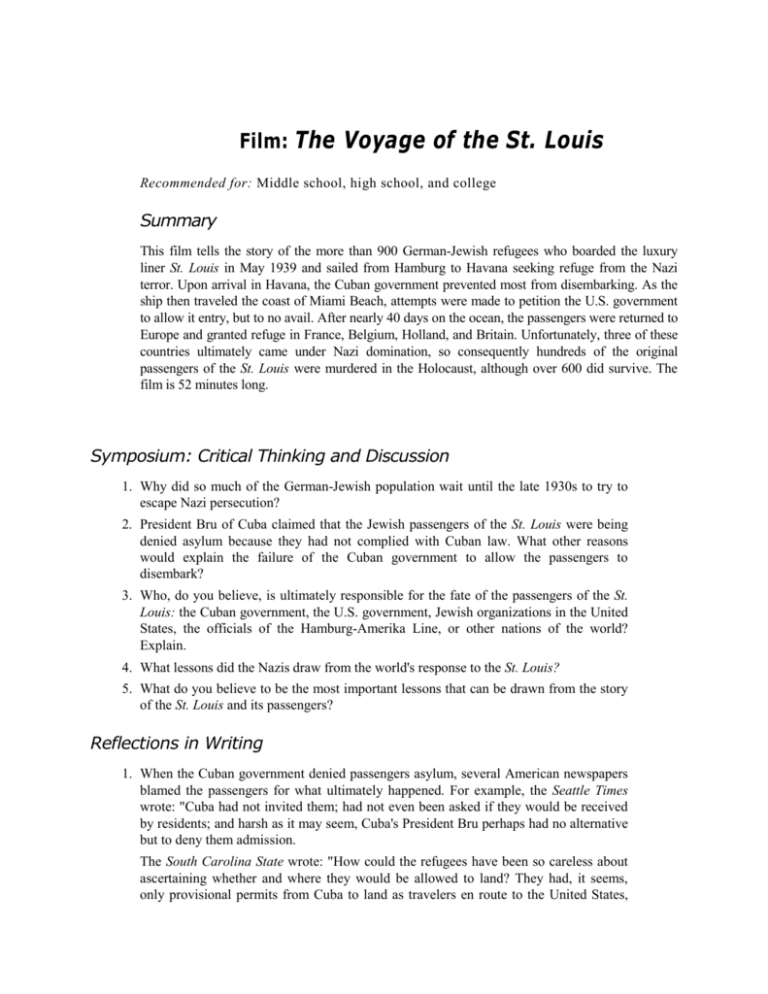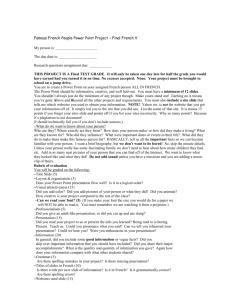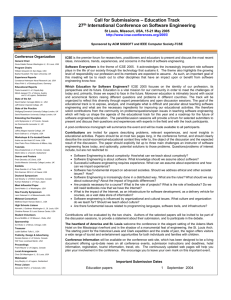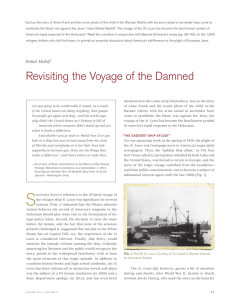Film: The Voyage of the St. Louis
advertisement

Film: The Voyage of the St. Louis Recommended for: Middle school, high school, and college Summary This film tells the story of the more than 900 German-Jewish refugees who boarded the luxury liner St. Louis in May 1939 and sailed from Hamburg to Havana seeking refuge from the Nazi terror. Upon arrival in Havana, the Cuban government prevented most from disembarking. As the ship then traveled the coast of Miami Beach, attempts were made to petition the U.S. government to allow it entry, but to no avail. After nearly 40 days on the ocean, the passengers were returned to Europe and granted refuge in France, Belgium, Holland, and Britain. Unfortunately, three of these countries ultimately came under Nazi domination, so consequently hundreds of the original passengers of the St. Louis were murdered in the Holocaust, although over 600 did survive. The film is 52 minutes long. Symposium: Critical Thinking and Discussion 1. Why did so much of the German-Jewish population wait until the late 1930s to try to escape Nazi persecution? 2. President Bru of Cuba claimed that the Jewish passengers of the St. Louis were being denied asylum because they had not complied with Cuban law. What other reasons would explain the failure of the Cuban government to allow the passengers to disembark? 3. Who, do you believe, is ultimately responsible for the fate of the passengers of the St. Louis: the Cuban government, the U.S. government, Jewish organizations in the United States, the officials of the Hamburg-Amerika Line, or other nations of the world? Explain. 4. What lessons did the Nazis draw from the world's response to the St. Louis? 5. What do you believe to be the most important lessons that can be drawn from the story of the St. Louis and its passengers? Reflections in Writing 1. When the Cuban government denied passengers asylum, several American newspapers blamed the passengers for what ultimately happened. For example, the Seattle Times wrote: "Cuba had not invited them; had not even been asked if they would be received by residents; and harsh as it may seem, Cuba's President Bru perhaps had no alternative but to deny them admission. The South Carolina State wrote: "How could the refugees have been so careless about ascertaining whether and where they would be allowed to land? They had, it seems, only provisional permits from Cuba to land as travelers en route to the United States, where they hoped to gain admission later. What grounds were there for such hope? And just what does the word 'later' imply to Cuba?" 2. Write a persuasive paper that expresses your opposition to one of the above viewpoints. 3. Create a moral or ethical question raised by the story of the St. Louis. For example: "The U.S. had already provided asylum for many refugees. Is there a limit to how much the U.S. could do?" Discuss the question in groups or with the entire class. 4. Create a concept book on being a bystander for students younger than you that tells the story of the St. Louis. Include photos and illustrations. 5. Read several newspaper accounts of the St. Louis. Compile the information and, with others, create a newspaper in tribute to the passengers. Your paper may include articles that tell the who, what, where, why, and how; photos and captions; biographical sketches of some of the passengers of the St. Louis; an advice column related to the situation; an editorial cartoon; a letter to the editor. Researching the History 1. Research current U S immigration policy. In what ways is it similar and in what ways is it different from the policy in the 1930s and 1940s? 2. In what ways are the experiences of refugees such as the Haitian, Cuban, Indochinese, or Central American similar to or different from those of the passengers of the St. Louis? Research the position of the United States concerning the St. Louis. Who was involved in the decision to make the St. Louis to return to Europe? What viewpoints were expressed? What were the political ramifications? 3. Obtain the names of some of the passengers on the fateful journey of the St. Louis. Select one and trace the events of this person's life from the time he or she returned to Europe. Look at the USHMM website link for this information. 4. Research the Evian Conference of 1938 and the Bermuda Conference of 1943. What generalizations can you make based on the results of these conferences?






